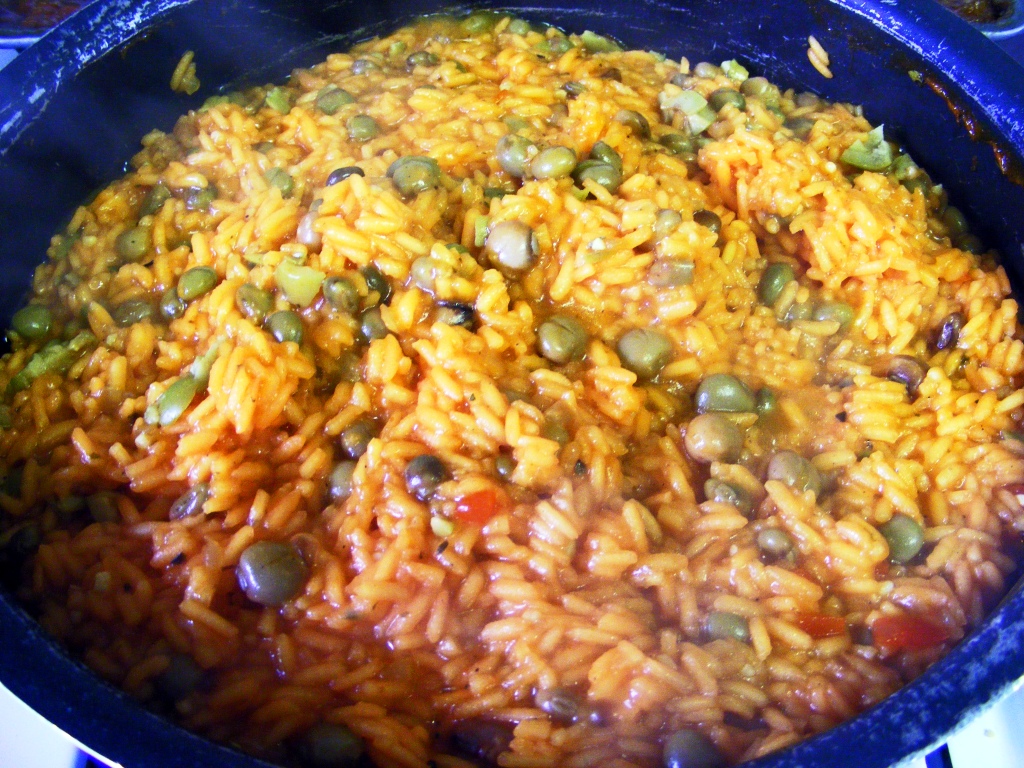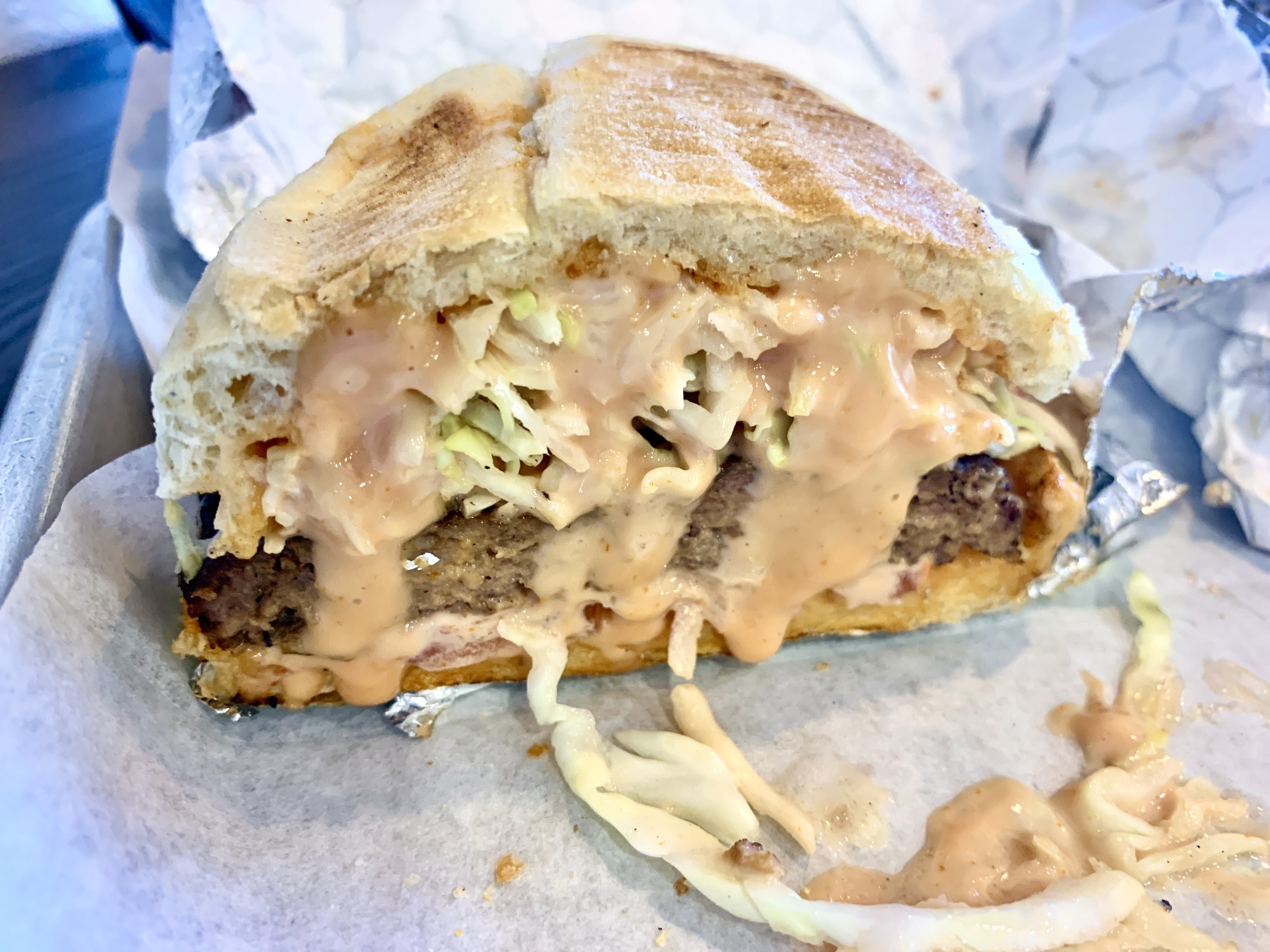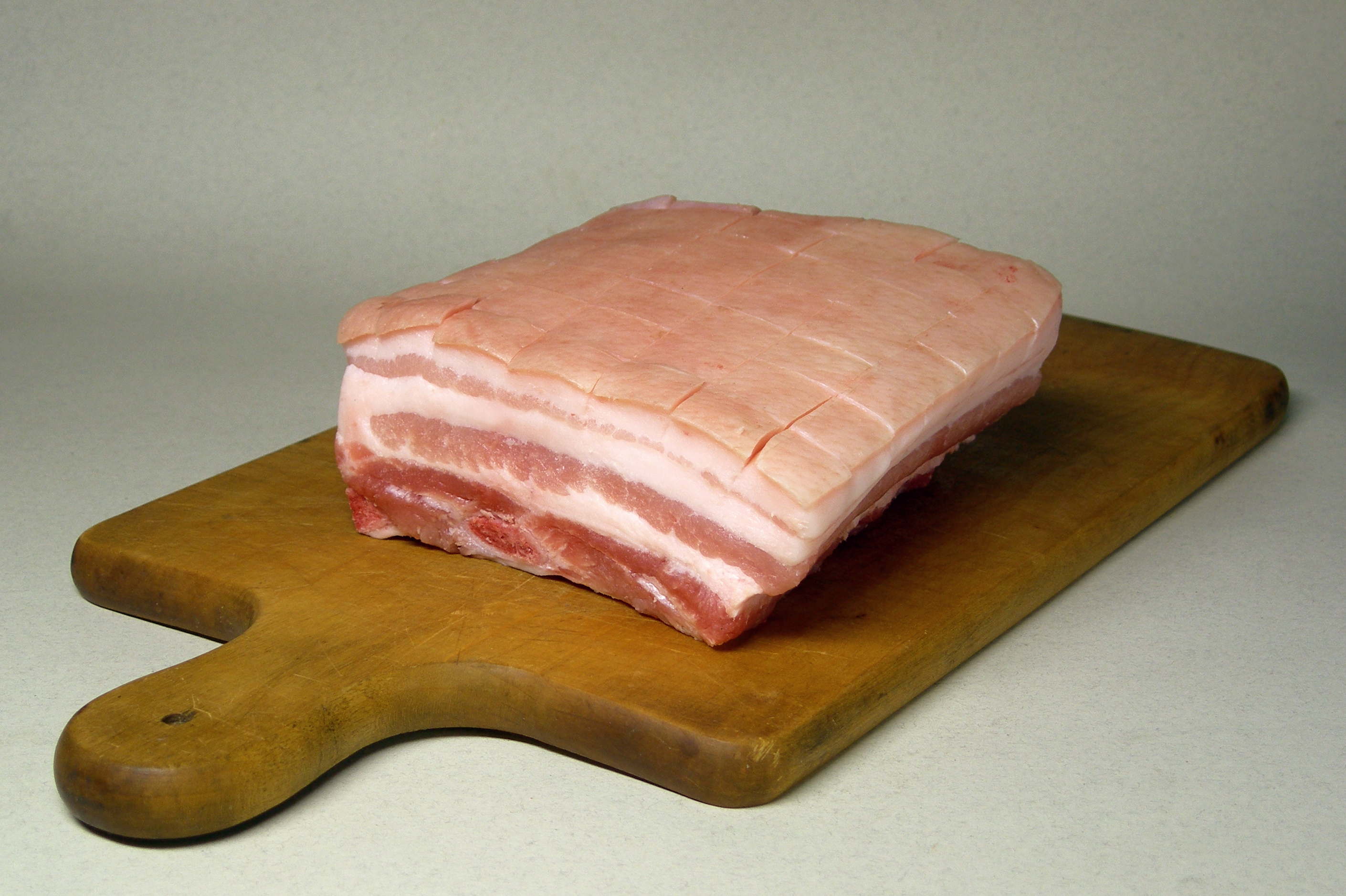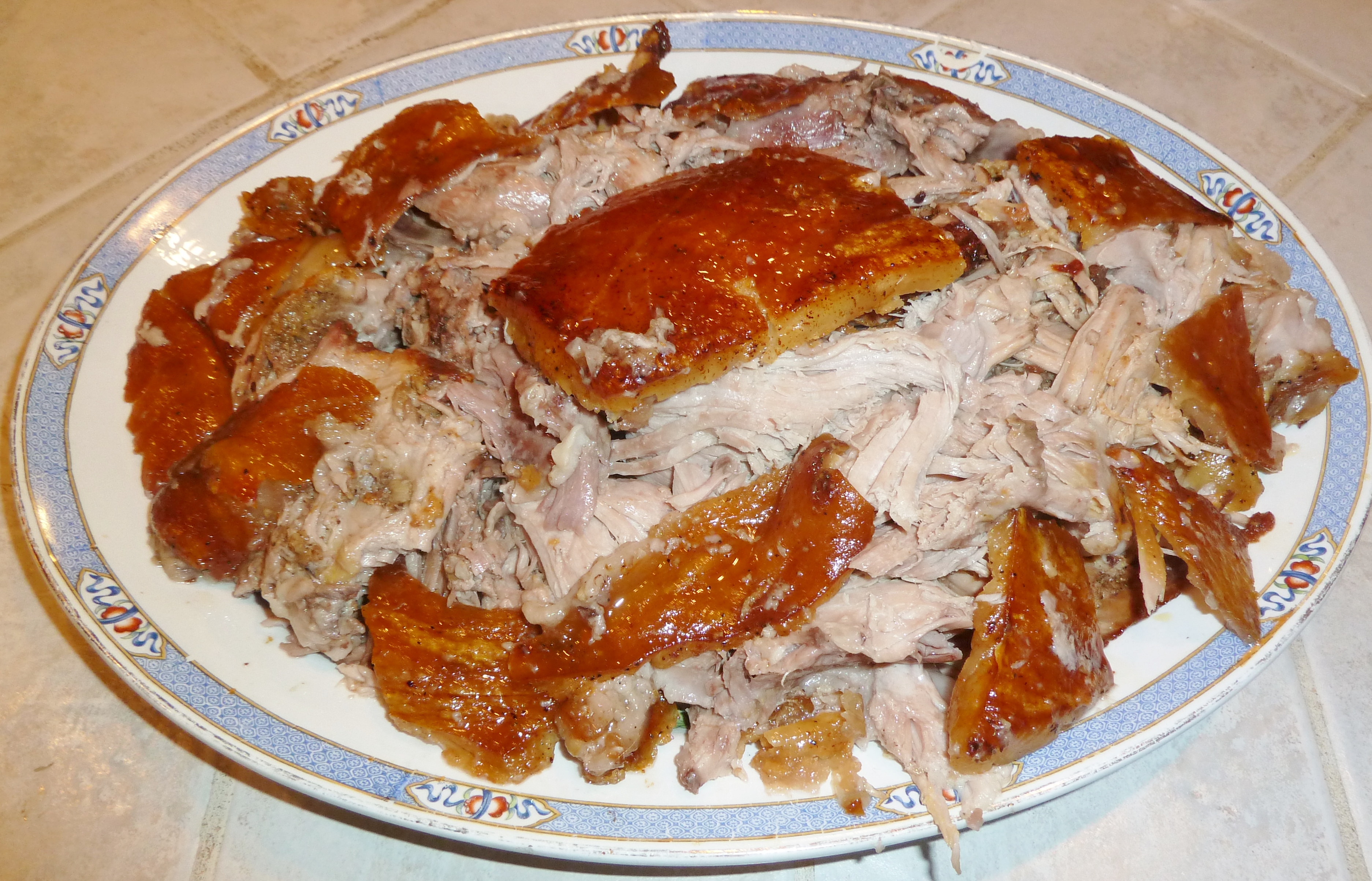|
Pernil Latino
Pernil (pernil asado, pernil al horno, roast pork butt) is a slow-roasted marinated pork leg or pork shoulder. In Latin American countries the dish is commonly shared during Christmas. It is a typically accompanied by arroz. The pork shoulder is used as a whole piece, with skin and bone. It is marinated the day prior to roasting with sofrito, salt and pepper, plus possibly additional spices (oregano and adobo). Sofrito is placed deep within the meat through small cuts. After marination the covered meat is slowly roasted initially in the oven for several hours, and, in the final phase, at a higher temperature with the cover off to get the skin crisp. When finished, the meat falls off the bone, and the crisp skin (cuero) is separated, cleared of fat, and can be served separately as cueritos (skin chips). See also * Jokbal ''Jokbal''(족발) is a Korean dish consisting of pig's trotters cooked with soy sauce and spices. [...More Info...] [...Related Items...] OR: [Wikipedia] [Google] [Baidu] |
Roast Pork
This is a list of notable pork dishes. Pork is the culinary name for meat from the domestic pig ('' Sus domesticus''). It is one of the most commonly consumed meats worldwide,Raloff, JanetFood for Thought: Global Food Trends Science News Online. May 31, 2003. with evidence of pig husbandry dating back to 5000 BC. Pork is eaten both freshly cooked and preserved. The consumption of pork is prohibited in Judaism, Islam, and some Christian denominations such as Seventh-day Adventism. Fresh pork may contain trichinosis, a parasitic disease caused by eating raw or undercooked pork or wild game infected with the larvae of a species of roundworm ''Trichinella spiralis'', commonly called the trichina worm. In the United States, the U.S. Department of Agriculture recommends cooking ground pork, that is obtained from pig carcasses, to an internal temperature of 160 °F, followed by a 3-minute rest, and cooking whole cuts to a minimum internal temperature of 145 °F, also follow ... [...More Info...] [...Related Items...] OR: [Wikipedia] [Google] [Baidu] |
Cueritos
Cuerito is pig skin (pork rind) from Mexican cuisine, Venezuelan cuisine and Spanish cuisine. ''Cuero'' is the Spanish-language word for skin, leather or hide, so ''cueritos'' means "little skins". They are usually pickled in vinegar Cueritos: Pickled Pork Rinds from Tortas Paquime] by Erica O'Neil Wed., Apr. 13 2011 ''Phoenix New Times'' (''cueritos de vinagre'') and can be made with a spicy sauce. The vinegar can be seasoned with pineapple, dulce macho (), s, |
Puerto Rican Cuisine
Puerto Rican cuisine has its roots in the cooking traditions and practices of Europe (mostly Spain#Cuisine, Spain), Africa and the native Taínos. History Puerto Rican cuisine has been influenced by an array of cultures including Taino Arawak, Spanish, and African. Although Puerto Rican cooking is somewhat similar to both Spanish cuisine, Spanish and other Latin American cuisine, it reflects a unique blend of influences, using indigenous seasonings and ingredients. Locals call their cuisine ''cocina criolla''. By the end of the nineteenth century, the traditional Puerto Rican cuisine was well established. By 1848 the first restaurant, La Mallorquina, opened in Old San Juan. ''El Cocinero Puerto-Riqueño o Formulario'', the island's first cookbook, was published in 1849. Taíno influence ''See: Native American cuisine'' From the diet of the Taíno people, Taíno (culturally related with the Maya civilization, Maya and Kalina people, Carib peoples of Central America and the ... [...More Info...] [...Related Items...] OR: [Wikipedia] [Google] [Baidu] |
Dominican Republic Cuisine
Dominican cuisine is made up of Spanish, indigenous Taíno, Middle Eastern and African influences. As in Spain, the largest, most important meal of the day is lunch. Its most typical form, nicknamed ''la bandera'' ("the flag"), consists of white rice, red beans and meat (beef, chicken, pork, or fish), sometimes accompanied by a side of salad. Dishes and their origins The Dominican Republic was formerly a Spanish colony. Many Spanish traits are still present in the island. Many traditional Spanish dishes have found a new home in the Dominican Republic, some with a twist. African and Taíno dishes still hold strong, some of them unchanged. All or nearly all food groups are accommodated in typical Dominican cuisine, as it incorporates meat or seafood; grains, especially rice, corn (native to the island), and wheat; vegetables, such as beans and other legumes, potatoes, ''yuca'', or plantains, and salad; dairy products, especially milk and cheese; and fruits, such as oranges ... [...More Info...] [...Related Items...] OR: [Wikipedia] [Google] [Baidu] |
Ecuadorian Cuisine
Ecuadorian cuisine is diverse, varying with altitude, and associated agricultural conditions. Ecuadorian cuisine is an amalgamation of Spanish, Andean, and Amazonian cuisines and to a lesser degree Italian, Lebanese, African, and Chinese. Beef, chicken, and seafood are popular in the coastal regions, especially ceviche, and are typically served with carbohydrate-rich foods, such as rice accompanied with lentils, pasta, or plantain. In the mountainous regions pork, chicken, beef and ''cuy'' (guinea pig) are popular and are often served with rice, maize, or potatoes. A popular street food in mountainous regions is ', consisting of potatoes served with roasted pig. Some examples of Ecuadorian cuisine in general include ' (green plantain slices fried in oil, mashed up, and then refried), ' (a pan-seared potato ball), and ' (a type of stew made from goat). A wide variety of fresh fruit is available, particularly at lower altitudes, including ', passionfruit, ', several types of ba ... [...More Info...] [...Related Items...] OR: [Wikipedia] [Google] [Baidu] |
Cuban Cuisine
Cuban cuisine is largely based on Spanish cuisine with influence from African and other Caribbean cuisines. Some Cuban recipes share spices and techniques with Spanish, African and Taino cooking, with some Caribbean influence in spice and flavor. This results in a blend of the several different cultural influences. A small but noteworthy Chinese influence can also be accounted for, mainly in the Havana area. There is also some Italian influence. During colonial times, Cuba was an important port for trade, and the Spanish ancestors of Cubans brought with them the culinary traditions of different parts of Spain.Rodriguez, H. ''Cuban Food Profile: Cuban Food History'' Overview As a result of the colonization of Cuba by Spain, one of the main influences on the cuisine is from Spain. Other culinary influences include the Taíno, the indigenous people of Cuba, Africa, from the Africans who were brought to Cuba as slaves, and French, from the French colonists who came to Cuba from Ha ... [...More Info...] [...Related Items...] OR: [Wikipedia] [Google] [Baidu] |
Pork
Pork is the culinary name for the meat of the domestic pig (''Sus domesticus''). It is the most commonly consumed meat worldwide, with evidence of pig husbandry dating back to 5000 BCE. Pork is eaten both freshly cooked and preserved; curing extends the shelf life of pork products. Ham, gammon, bacon, and sausage are examples of preserved pork. Charcuterie is the branch of cooking devoted to prepared meat products, many from pork. Pork is the most popular meat in the Western world, particularly in Central Europe. It is also very popular in East and Southeast Asia (Mainland Southeast Asia, Philippines, Singapore, and East Timor). The meat is highly prized in Asian cuisines, especially in Mainland China, for its fat content and texture. Some religions and cultures prohibit pork consumption, notably Islam and Judaism. History Pigs were domesticated in Mesopotamia around 13,000 BC. Charcuterie is the branch of cooking devoted to prepared meat products su ... [...More Info...] [...Related Items...] OR: [Wikipedia] [Google] [Baidu] |
Jokbal
''Jokbal''(족발) is a Korean dish consisting of pig's trotters cooked with soy sauce and spices.Jokbal at It is usually braised in a combination of soy sauce, ginger, garlic, and rice wine. Additional ingredients used can include onion, leeks, garlic, cinnamon and black pepper. History Jokbal is presumed to have originated from braised pork, a local food of Hwanghae-do, where pigs' legs are boiled. The current jokbal is a food that started in Jangchung-dong in the 1960s, and is known to have been developed by grandmothers from Pyeongan-do and Hwanghae-do for a living. In the 1960s and 1970s, it began to be widely known through visitors ...[...More Info...] [...Related Items...] OR: [Wikipedia] [Google] [Baidu] |
Crispiness
Crispiness or crispness is one of the most common food texture attributes. Crispiness refers to a hard food that emits a sound upon fracturing. Foods described as crisp tend not to show signs of deformation prior to fracture. Crispiness and crunchiness are often used interchangeably, however crispiness tends to be associated with a higher pitched sound, while crunchiness is associated with lower pitched sounds. Cooking techniques for crispiness There are a number of techniques to achieve crispiness when cooking. Frying food can make it crispy, such seen in French fries. A breading coating using flour, egg wash, and bread crumbs will provide a layer of crispiness.{{cite book, author=Editors, America's Test Kitchen , title=The Science of Good Cooking, publisher=America's Test Kitchen, 2012 , page=152f , isbn=978-1-933615-98-1, year=2012 Baking and roasting impart crispiness, as well, as noted in the skin of Peking duck, porchetta or pernil. Crispiness is lost when food items ... [...More Info...] [...Related Items...] OR: [Wikipedia] [Google] [Baidu] |
Pork Shoulder
A Boston butt is the slightly wedged shaped portion of the pork shoulder above the standard picnic cut which includes the blade bone and the "lean butt" (which is boneless), both extensions of the tenderloin cut and can be used in place of the tenderloin. Generally the pork shoulder is considered a primal cut with the picnic and butt sections being sub-primal cuts however, some sources do refer to the butt as a primary cut. The tenderloin is closer to the rear of the hog. The shoulder is at the front. The Boston butt gets its name simply from the fact that it is the wider end of the front shoulder. Butt is old English for “wide end” like the butt of a gun. See also *Cut of pork File:British Pork Cuts.svg, 400px, British cuts of pork poly 187 219 187 194 173 196 Trotters poly 372 226 373 207 361 204 359 216 Trotters poly 171 141 166 104 287 117 294 152 Belly poly 167 102 178 27 315 23 274 102 Loin poly 361 201 371 1 ... Could someone knowledgeable please edit the abov ... [...More Info...] [...Related Items...] OR: [Wikipedia] [Google] [Baidu] |
Marination
Marinating is the process of soaking foods in a seasoned, often acidic, liquid before cooking. The origin of the word alludes to the use of brine (''aqua marina'' or sea water) in the pickling process, which led to the technique of adding flavor by immersion in liquid. The liquid in question, the marinade, can be either acidic (made with ingredients such as vinegar, lemon juice, or wine) or enzymatic (made with ingredients such as pineapple, papaya, yogurt, or ginger Ginger (''Zingiber officinale'') is a flowering plant whose rhizome, ginger root or ginger, is widely used as a spice A spice is a seed, fruit, root, bark, or other plant substance primarily used for flavoring or coloring food. Spices ...), or have a neutral pH. In addition to these ingredients, a marinade often contains oils, herbs, and spices to further flavor the food items. It is commonly used to flavor foods and to tenderizing, tenderize tougher cuts of meat. The process may last seconds or d ... [...More Info...] [...Related Items...] OR: [Wikipedia] [Google] [Baidu] |
Adobo
or ( Spanish: marinade, sauce, or seasoning) is the immersion of cooked food in a stock (or sauce) composed variously of paprika, oregano, salt, garlic, and vinegar to preserve and enhance its flavor. The Portuguese variant is known as . The practice, native to Iberia ( Spanish cuisineManuel Martinez Llopis (1989), ''Historia de la gastronomía española'', Alianza editorial, and Portuguese cuisine), was widely adopted in Latin America, as well as Spanish and Portuguese colonies in Africa and Asia. In the Philippines, the name was given by colonial-era Spaniards on the islands to a different indigenous cooking method that also uses vinegar. Although similar, this developed independently of Spanish influence. Characteristics In the years following the arrival of Europeans to the Americas, meat and fish began to be preserved by new methods. Low temperatures facilitate food preservation, but in higher temperatures, other techniques, such as ''adobo'', became neces ... [...More Info...] [...Related Items...] OR: [Wikipedia] [Google] [Baidu] |








